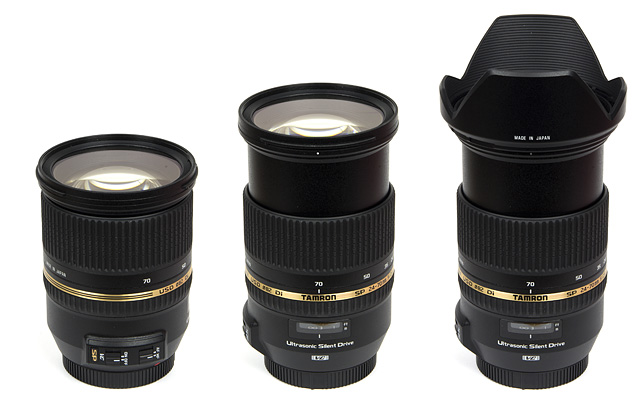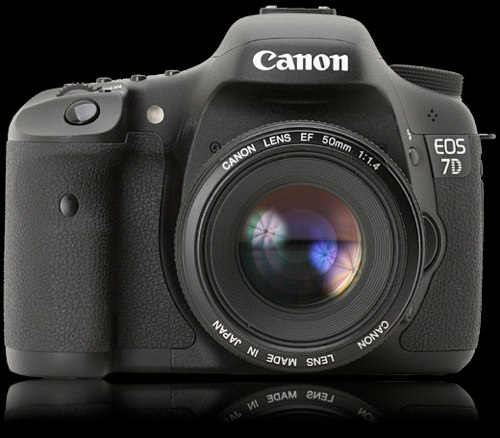
Lens images from photozone
I went to shop today to purchase the Canon EF 24-70 F/2.8 L II that is going to become my workhorse for next years. Since I could not sell all the lenses I had for the change, they gave me the Tamron SP 24-70 F/2.8 for trying, if I am not satisfied I can purchase the Canon 24-70 later. They are so sure I'll like the tammy (since many other professional photographers buy it and are happy with it) to let me use it for some days and I wanted to give it a chance.
I do usually avoid third part lenses, not that they are bad, but for reliability, assistance, compatibility, autofocus and other small things I always prefer to use Canon lenses, even if they cost more. And the Canon EF 24-70 F/2.8 costs A LOT more! My decision to purchase it depends on the cash-back Christmas offer they make now (ok, let’s make some adv for Canon, they need it! ^_^ SEE OFFER). Even after the 250eu refunding, the difference between the two is still a lot, about 750 eu.
I must then say that for almost half the price of the Canon I am very very tempted to keep the Tamron. Let’s see why. The Tamron has image stabilisation aka VC, which can be very useful, especially for the photography I make. I don’t do landscapes and if I do I prefer to use specific lenses (although I must say, before going on the details, that to my eyes the Tamron is a bit better than the Canon EF 17-40 F/4 L I used for it @24mm). For reportages, wedding and travel photography, no use of tripod, the VC is a good thing (Canon 24-70 is missing) but only at 70mm I do feel I need it. After testing, it seems to compensate to max 2 stops (not the 3-4 rated by Tamron, but it is very subjective), which is good nevertheless.

About shape and weight: It is a very compact lens although very large too, 82mm of diameter, it is not heavy (same as the Canon) and surprisingly feels less on the hand than my Sigma EF 35mm 1.4 Art I used for comparison, they are close though. Tammy weights 825 grams, it seems a solid tool to use. Is rated as tropicalized and the construction is indeed very good, although all plastic, good plastic. The lens barrel is mostly made of plastics but it is of high quality and it is tightly assembled. The new weather sealing is very welcome, of course. Same goes for the very fast and silent USD (ultrasonic AF drive).
I don't like the reverse ring for changing focal lengths, which pushes you to use the left hand in a not correct manner, then I find the very tiny focusing ring disturbing, but usable, and hate the fact that the lock is usable only at 24mm. But the zooming is good, mean there is not a chance that the focal length could change, the ring is neither too hard nor to loose to move. I tried a polarizer I had, 82mm, never used on other lenses, it made the focusing imprecise and the images blurred, probably due to bad polarizer itself not the lens, it is a cheap one.
Let’s see the IQ which is the most important thing for many (I was more concerned about AF). The image quality is very good, I suspect a little front focus what I have to try to assess later, as for now sharpening and contrast of images appear quite good @ F/8, even at the corners. I tried the Sigma 35mm 1.4 for comparison. It is a marvellous lens, we know it, an high quality prime. The Sigma is quite sharper, especially at corners. But the differences are not big. The Tammy is good, mean they are both high quality lenses, the Sigma is so much of an excellence that it does not make justice to the also good Tamron.
Let’s see some images (they are nothing special, sorry, soon I’ll ad some pictures I would make even if I was not to test a lens ^_^):
This image is 35mm wide. I tested the Sigma that is native 35mm and the Tamron at 35mm. Both at F/8 to see the best sharpness in situations such as landscape photography (although it is not the reason I bought it for).
All pictures were processed with ACR 8.3, I only corrected the chromatic aberrations (which is very low for both lenses), not the distortions nor vignetting. Also the default sharpening of ACR (25%) was reduced to 0.
Sigma 35mm, 100% crop, centre:
And the Tamron:
At F/2.8 (what interests me more) the Tamron is definitely better than the Canon 24-105 F/4 L IS USM (at F/4) that I gave to the seller for change. We can see that at centre and F/8 the Tammy is just very slight less sharp than the Sigma. Bad light is confusing, afterward we show another image where we can appreciate how sharp the Sigma is, better even at F/8 in the centre. But let’s see further.
Sigma 35mm @ F/8, corner:
Remember that NO sharpening at all is applied, even not the default sharpening applied by ACR, Lightroom DPP, etc.
This is the Tammy @ F/8:
Not bad at all!
Now I want to show another image’s crop after the pictures has been sharpened in PS. I applied a sharpening of 100% with a radius of 0.5 at the original size file (full resolution). Here is the image (again, not a nice one, I know! ^_^):
Sigma @ F/8, centre, sharpened:
This is the Tamron @35mm & F/8 and sharpened:
Even after sharpening the Sigma is a tad sharper, it is visible but just at pixel level. And Sigma has more contrast, what can be added in post-production. Lateral CAs are very low which contributes to the high sharpness perception even at the corners, as we will see now. Indeed when you remove chromatic fringing the halo around objects remains. Both the Sigma and the Tamron have no problem with that. Let’s see.
The Sigma is impressive. Look at the red car or the windows in the very corner, so sharp. Light was low. Here’s the Tamron:
Less sharp, here the difference is bigger than at centre. Let’s remember that this image has not been post-processed, mean the contrast could be improved.
Finally I wanted to test something that you can not test: zoom vs. prime. Sigma is better, end. But, what happens if you are on the field and a dramatic sunset happens in the far away and the only shot you can make is a narrower (field of view) FOV? You have to zoom. I repeat that I’m not interested in landscapes but the same can happen when photographing people. This is the shot we could take by zooming up to 70MM:
So I wanted to see if by taking a Sigma 35mm image (the best) and up-resizing it to the same magnification of the Tamron @70mm the higher quality of Sigma could make it against the magnification given by a zoom. The answer is: NO…of course. Here the crops:
After this I made some other shots on field using the F/2.8. At centre the Tamron is not loosing much in comparison to F/8. And you don’t need corner-to-corner sharpness when shooting with that aperture. Sometimes you do, but the VC is useful by allowing you to narrow the aperture at F/4 or F/5.6 for better DOF.
One of the thing that also positively impressed me is how well chromatic aberration is under control!. Lateral CA is really so few that it easy correctible in Camera Raw, Lightroom or DPP with no detail lost. By this picture taken at 70mm & F/2.8, we can appreciate it.
This is the Lateral CA, very low. Of course it can be more with a stronger light:
This is after activating the simple chromatic aberration correction in ACR 8.3 (and no need to further increase the correction on green/purple channels):
All this determines a good perception of contrast/sharpness also at the borders.
One thing that needs further testing is the image stabilisation. It is very effective. Tamron does not claim, as Canon does, how many stops it can stabilize, and the thing can change a lot whether you shoot indoor with safe conditions or outdoor with wind and quick action. Of course remember VC does not freeze action, it only compensates the hand-shaking. By a short test you can see that the images start to be a bit blurred (only visible at 100% magnification, not visible after reduction to web dimensions) at 1/15. We talk about the long focal length, @70MM. So 1/15 is very good. I show the 1/15 image as the large one, at 600x600px, just to show how at a web resolution even a bit blurred image appears sharp enough:
One thing I noticed is that the VC can be very effective at very low speeds such as 1/15 but sometimes “fail” at much safer shutters such as 1/80, 1/50. This is confirmed by the DPReview’s site too. They say it fails to compensate the pressure on the shutter button. Let’s see an example, both pictures at 1/50:
By the way, I remember shooting similar test images with my EF 24-105 F/4 IS L at F/4 (not 2.8 as here) and the focus area (centre) was not at all so sharp as Tamron’s. No sharpening has been applied.
This is an example of the bokeh at 24MM and close distance. It is good, not the best ever seen but to my eyes it is prime’s quality:
Bokeh seems also ok by other images I made, transition is always very smooth, but I’ll test it with specific shots outdoor at 70mm.
Finally I liked the autofocus a lot. It is fast and silent, it works well even with low light (I use an Eos 5D Mark3). I also liked that it can focus quite close with a good MFD (about 0.38) and AF is definitely better than the Sigma’s one which is ok. It seems also more consistent to me, mean the Sigma is not precise if near infinite or at MFD, the tammy seems better. You can see it in the VC-test images above, they were sho with AF and quite close to the subject
I do generally shoot very close to the subjects, even if not interested in macro photography. As reported in other reviews, the Canon 24-70 2.8 USM L II has some issues at short distances. Another good point for the Tammy.
I’ll expand this review in future…
EDIT: This is a full resolution image (ugly picture), the Tamron @35mm & F/8, so for landscape. This image has been a bit post-produced, a 50% of sharpening applied in ACR. Sigma 35mm is visibly sharper ONLY at the extreme corners. Just look by yourself, I’m impressed!
RIGHT BUTTON THEN CLICK OPEN IN A NEW WINDOW
I finally had the time to make some shots with good light, these are not what I intend to use the lens for but can give a good idea how much the lens can resolve. This image is shot at 70mm (very usefull when trying to get an image without distortions and as flat as possible) and F8. Image has been processed in ACR and a sharpening of 100% (radius: 1.0px) has been applied in Ps). In ACR distortion and perspective have been corrected, chromatic aberration too, some green fringing remains at the border, see the fench on top/right but is barely visible):
RIGHT BUTTON THEN CLICK OPEN IN A NEW WINDOW
©2013 Marco Palladino – all rights reserved








































